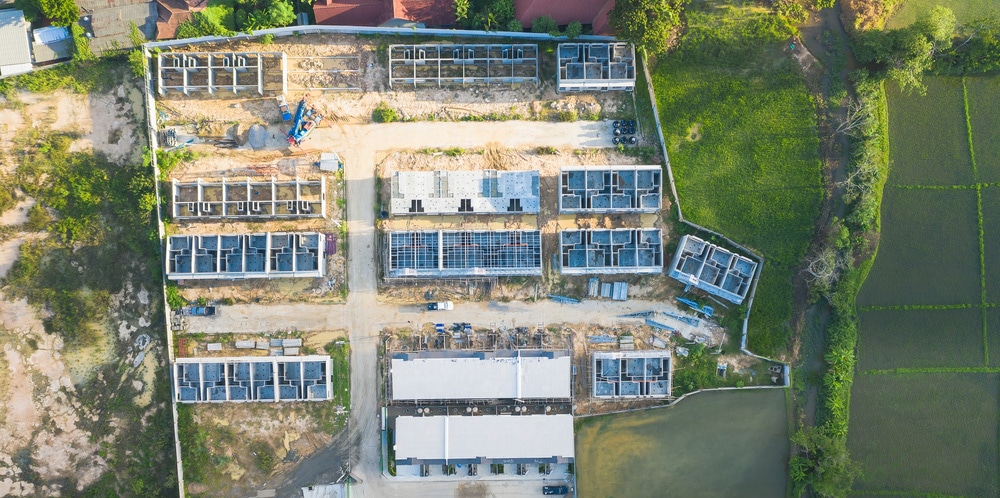
The Ultimate Location Rulebook For Buying Property
The words ‘location, location, location’ have long echoed throughout the Australian property market but what does it actually mean?
Sure, buying beach or waterside, or within 10kms of the CBD will not see you wrong – however, with the price of property continuing to soar, not everyone can afford to buy in such premium and primary locations anymore.
If this is you, then learning about how to buy in secondary markets is absolutely key.
Within any market – primary or secondary, there are indicators of the market’s ability to perform. When we understand what these market drivers are, we can organise our investment properties into locations that are primed for growth. You’ll also soon find that the ‘location, location, location’ phrase that real estate professionals love to talk about, is actually derived from more than just a post-code.
These buying factors are split up into two groups – macro drivers and mirco drivers.
Macro drivers tend to be more common and exist in a city to a state area and micro drivers tend to be seen more likely in suburbs or towns.
THE MACRO DRIVERS ARE:
Population growth, economics, demographics, infrastructure, yield variation and supply and demand.
Let’s break it down with some factual examples.
Population
By 2051 Australia’s population is set to increase to 40 million people according to the ABS. Today we are at 25 million people. With the world adding 60,000 new people every day and many wanting to migrate to Australia or New Zealand, it’s easy to see how real estate becomes valuable.
Economics
Economics is really linked to the employment market. Invest where there are jobs. The economy will always gather pace and then get jolted. Things will happen globally and locally. The major lesson to consider is to keep it simple. Invest near jobs such as big cities which have lots of industry.
Demographics
Demographics are fascinating because the trends are constantly evolving with time. For example, changes in household structures mean Australians have an increased desire to reside alone. The higher divorce rate puts pressure on the property market because mum and dad both need separate homes. And then there’s COVID which now sees more people working from home.
Infrastructure
Developers and governments spend billions of dollars on infrastructure each year. You will find the growth if you can locate the infrastructure. Be sure the infrastructure is real and forthcoming though, and not fictitious stories or fanciful hope. Check official government reports, in particular, state and local planning departments.
Yield Variation
This is a huge factor in the success of many areas. If yields are high, growth usually follows. Yield variation is an instrument to gauge future growth of markets because as the yields expand, growth will follow and compress closer to already expanded yields. The further the yield advances, the more likely that a growth expansion phase will follow. Simply remember this: “growth follows yields.”
Supply and Demand
Every suburb has different supply figures and future forecasts relating to supply. Try and not look at citywide figures. Dig deeper suburb by suburb to crack the code.
THE MICRO DRIVERS ARE:
The owners established benchmark, the new established benchmark, socio-economic, symbolic landmarks and the ripple effect. Let’s dig into it.
The Owners Established Benchmark
This is a great way of ensuring you are buying well in a suburb or town. Focus on the suburb and find benchmark sales and buy next to the newly created benchmark. In real estate, there is a phrase known as “Worst House, Best Street”. The owners established benchmark applies to this phrase. In other words, find a property that is literally a blank canvas in need of work i.e. the “worst house” and close to properties that have recently been purchased at higher amounts in value.
The New Established Benchmark
The real estate market often exposes investors to a mixture of new property and old property. Investors are often perplexed as to what to buy, new or old, and what variations exist accordingly. For example, if an old property in a micro market (suburb or town) is worth $200,000 and a comparable new property is worth $300,000, then the old property would be the better buy as the new established benchmark (NEB) variation is high at $100,000.
One could add value to the old property through renovation and extract a profit because of the high NEB variation. If the old property was $280,000 and the new similar property in the micro market is worth $300,000, then the NEB variation is low at $20,000.
The new property is the better buy, as the investor would not be able to add value through renovation to the old property to compete with the new property.
Symbolic Landmarks
When targeting a micro market for long-term growth, it’s often useful to consider symbolic reference. Symbolic landmarks are a unique suburb attribute that can add to the long term performance of the area and therefore the property.
Take a major hospital for example. Major hospitals are a huge strategic symbolic reference. They provide employment to thousands of people and are geographically planned to sustain growth. It’s not often that hospitals are closed down. Some hospitals are planned by state town planners to be around for hundreds of years. Buying close to symbolic references often means you get a steady stream of tenants and high yields. There are many unique symbolic landmarks that enormously affect the long term performance of a suburb or town as a micro market driver, such as beaches, universities, employment centres and transport hubs.
The Ripple Effect
The real estate ripple effect acts similar to a drop of water splashing into a still pond. The associated ripple then flows and creates movement in the marketplace.
Seeing the potential of an area and judging or timing a growth surge via the ripple effect requires sound research into a suburb and its similar surrounding areas. For example, if the average home price of Suburb A is $600,000, Suburb B homes 2kms away are averaging $400,000.
There is an instant variation evident in this example. The ripple variation is $100,000 per 1 km. By researching carefully what attributes Suburb A has compared to Suburb B, one will often find that the suburbs are comparable; one is simply closer to the city or has a more significant symbolic reference than the other.
Buyers soon respond to affordability (value) over proximity! Often a suburb can be targeted for gentrification after similar close-by suburbs have been revitalised. This means the ripple may be coming. Property investors can reap the benefits of this catalyst for property growth.
Socio-Economic
Socio-Economics is a key micro market driver and is a great way of understanding if a micro market (suburb or town) will grow. The easiest way to explain socio-economics is by the following equation:
Average Income versus Average House Price
If wages are high and house prices affordable, the property market can rise in value.
THE TIME TO INVEST IS NOW
All of these factors and more should be incorporated into your buying strategy.
Learn more by taking the first step and sign up for a free property investing night with Positive Real Estate. You’ll walk away with the confidence to make smart, informed decisions about your portfolio.
Recent Articles
Retirement Planning Tips For Property Investors
It’s the Australian dream – the clock ticks 65 (or earlier) and off you sail into the sunset of retirement to live out the rest of your years stress-free. Sadly, for some, this will remain nothing more than a dream with the drastic cost of living rising and no plan to cover the shortfall.
10 Ways To Save For A House Deposit [For Investors Or First Timers]
Saving for a house deposit to get onto the property investment ladder is tough. Especially with the cost of living drastically going up. After bills, rent/mortgage, groceries, petrol, insurance… there isn’t a whole lot left for saving. But that doesn’t mean it’s impossible! By adopting these 10 ways to save for a house deposit you’ll be ten steps closer to building out your portfolio and creating future wealth.
Learn Property Investment In 2022 – Where To Start!
With a commitment to learn property investment and all its ins and outs you’ll be able to grow a booming property portfolio, enjoy passive income streams and eventually create financial security for retirement. Here’s a list of how you can get started…
5 Questions To Ask Before Investing In A House
Some may stumble across a business opportunity, or perhaps investing in shares, but our go-to vehicle is real estate. Real estate is a long game that has the potential to provide generational legacy wealth, if done correctly. To set yourself apart from the 99% of investors who fail, you need to ask these 5 questions before investing in a house.
How To Protect Your Real Estate Assets For Long-Lasting Wealth
Protecting your real estate assets is perhaps more important than building them. Obviously we always hope for the best, but there are many things that can go wrong and when they do, you and your assets are at risk. Incorporating prevention measures into your investment strategy could be the difference between you continuing to build out your wealth or losing everything you own.
How Investors Can Use Equity Lock To Grow Their Portfolio
How to make money from subdividing land largely depends on how you choose to do it. One thing for sure though is that when done right, it can catapult your portfolio significantly in a very short time!
How To Make Money From Subdividing Land?
As an investor, there are many different strategies that you can employ to generate wealth, and a strategy that is great for instant equity gains is subdivision. But, while it sounds like an exciting project to take on, how do you actually make money from subdividing land?
The Money Management Skills You Need For Real Estate In 2022
Real estate is the perfect asset structure for wealth building, but it has to be done right – and that means having solid money management skills to back you as you make these major financial decisions. Some of these skills may seem obvious – like having a budget – but you’d be surprised how many young investors didn’t get to build this foundation of knowledge through their school or home life.
10 Property Investment Tax Mistakes To Avoid
Tax isn’t often one of those conversations that give investors the warm fuzzies, especially when we’re talking about the 10 property investment tax mistakes to avoid! But it’s important that property investors reframe their thoughts around tax. Owning real estate can actually be incredibly tax effective – in fact some might say tax is a secret weapon for property investing.





![10 Ways To Save For A House Deposit [For Investors Or First Timers]](https://positiverealestate.com.au/wp-content/uploads/2022/09/saving-for-a-deposit.jpeg)






